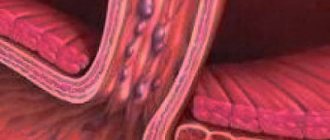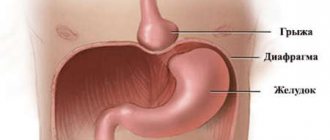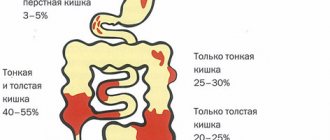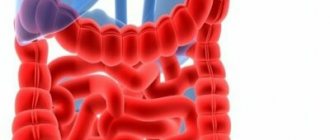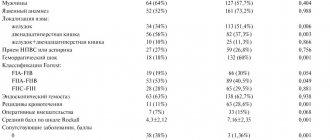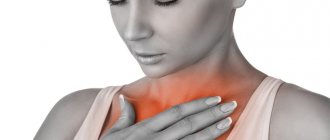Esophagitis is a disorder characterized by inflammation of the lining of the esophagus. The main manifestations of this disease are pain in the chest area, disruption of the process of swallowing solid and liquid food, up to complete obstruction, as well as heartburn and attacks of nausea. The disease is characterized by the formation of a large number of complications that require surgical treatment. Among them are ulcerative lesions of the mucous membrane, stenosis, perforation and Barrett's disease. Esophageal esophagitis has many classifications and types, each of which has its own causes and symptoms. Treatment and diagnosis are often general.
- Classifications
- Kinds
- Peptic esophagitis
- Eosinophilic esophagitis
- Fungal or candida
- Fibrous esophagitis
- Ulcerative esophagitis
- Atrophic esophagitis
- Superficial non-erosive
- Radiation esophagitis
- Hemorrhagic esophagitis
- Diagnosis and treatment
What is important to know
The relevance of the problem of GERD is also due to the fact that almost every second inhabitant of the planet periodically experiences symptoms of this disease, unaware of its presence in their body. What is the danger of this disease?
- first of all, in reducing the quality of life of the patients themselves;
- secondly, in severe complications such as the development of peptic ulcers , stenosis and perforation of the esophagus .
Studies of the disease have established a clear relationship that the gastroesophageal reflux factor can be traced in the genesis of some dental diseases, ENT diseases, as well as bronchopulmonary and cardiovascular diseases. But, despite the relevance of the problems associated with esophagitis, its danger is underestimated.
In this regard, it is important to find out how esophagitis manifests itself in its most common form.
Esophagitis 1st degree: what is it?
Esophagitis is an inflammation of the esophagus associated with improper functioning of the muscular sphincter connecting it to the stomach. Normally, it prevents the contents of the stomach from entering the esophagus.
The first degree of esophagitis involves a weakening of the sphincter, which does not close completely and allows the acidic contents of the stomach to pass through. The esophageal mucosa, which is not intended for contact with acid and has a neutral environment, receives burns, which causes certain symptoms of first-degree esophagitis. In total, the pathology has several degrees of its manifestation, depending on the stage of the process and the area of damage to the esophageal mucosa.
So, the symptoms of first degree GERD are:
- Heartburn . Normally, heartburn can occur in a completely healthy person, but if this condition is permanent, then this indicates the manifestation of signs of esophagitis.
- Belching . It is most often observed when drinking alcohol.
- Soreness and burning sensation in the throat .
- Feeling of a lump stuck in the throat after physical activity, difficulty swallowing.
- Chest pain after eating.
There may be other symptoms that seem to be unrelated to either the esophagus or digestion. For example, due to a slight displacement of the stomach in the abdominal cavity, it can compress the lungs and bronchi. This in turn causes periodic coughing. Emissions from the stomach with large amounts of hydrochloric acid negatively affect the condition of tooth enamel. It undergoes constant destruction, which is the cause of the development of caries.
The disease at this stage of development has small areas of damage to the esophageal mucosa, not exceeding 5 mm in diameter.
Causes of grade 1 esophagitis
The main reason for the development of GERD is weakness of the neuromuscular part of the esophagus, namely its sphincter. Factors predisposing to the development of esophagitis are:
- poor-quality, irrational nutrition;
- alcohol abuse, smoking ;
- antispasmodic and sedative medications;
- eating large amounts of sweet and spicy foods ;
- past infectious diseases that were severe or with complications (diphtheria, scarlet fever, sepsis);
- various damage to the mucous membrane of the esophagus : chemical, thermal, mechanical;
- surgical interventions for gastrectomy, gastrectomy and other types of surgical treatment;
- the presence of a hiatal hernia;
- gastritis;
- obesity;
- peptic ulcer of the stomach and duodenum;
- fungal and viral infections;
- chemotherapy.
The disease, without appropriate treatment, develops further and passes into other stages.
Kinds
In addition to the Los Angeles and other endoscopic classifications, there are several types of esophagitis, each of which has its own characteristics of course and treatment.
Peptic esophagitis
The first of these is peptic esophagitis , which is also called reflux esophagitis . This is due to the constant backflow of stomach contents into the esophagus. Often the causes of this disorder are poor nutrition, excessively high body weight, leading an unhealthy lifestyle, wearing very tight clothing that tightens the anterior wall of the abdominal cavity.
Peptic esophagitis has its own classification, depending on the degree of damage to the mucous membrane, which is similar to the Los Angeles one. The disease can lead to some complications, the most serious of which is Barrett's disease - a structural change in mucosal tissue. Treatment consists of taking medications and following a diet. Surgical intervention is extremely rare.
The main symptoms of peptic esophagitis and some other types of the disease are - impaired passage of solid and liquid food, a feeling of pain when swallowing, constant heartburn, sore throat, which causes cough, nausea and pain in the chest, as well as belching with an unpleasant sour smell of recently eaten dishes.
Symptoms of peptic esophagitis
Eosinophilic esophagitis
Eosinophilic esophagitis is a disease that is often common among school-age children and people under thirty years of age. This disorder is characterized by isolated severity of infiltration of the esophagus.
The factors in the formation and manifestation of symptoms of eosinophilic esophagitis are practically no different from other types of the disease. Treatment is based on diet therapy and medication.
Fungal or candidal esophagitis
Fungal esophagitis in medicine has a second name - candidiasis . It differs in that the inflammatory process on the esophageal mucosa is provoked by the action of a pathological microorganism. But there are several predisposing factors to the occurrence of a fungal type of disease:
- taking antibiotics for a long time;
- thermal or mechanical injuries of the esophagus;
- diabetes;
- individual allergic reactions to food;
- abuse of bad habits;
- following a strict diet or fasting;
- cancerous tumors.
Candidal esophagitis
Treatment for this type of illness is quite long and includes the prescription of medications, proper nutrition and traditional medicine.
Fibrous esophagitis
Fibrous esophagitis is often formed against the background of scarlet fever or diphtheria. It is characterized by the formation of fibrous exudate - a film, grayish in color, on top of the mucosa, but it is quite easy to remove, since it is not attached to the tissues of the esophagus. There are no characteristic symptoms of this type of disorder. The symptoms are in many ways similar to the course of peptic esophagitis.
Treatment of this form consists of taking a course of antibiotics, which, if ineffective, requires medical intervention. Untimely therapy can lead to several complications, including ulcerative lesions of the mucous membrane, stenosis, narrowing of the lumen of the esophagus and Barrett's syndrome.
Ulcerative esophagitis
Ulcerative esophagitis is formed against the background of thermal or chemical burns of the lining of the esophagus. This type of disease has its own classification depending on the degree of damage and spread of the inflammatory process, which corresponds to the Los Angeles classification. There are several reasons for this disorder:
- the presence of concomitant bacterial or viral infections;
- damage to the integrity of the mucous membrane during medical procedures;
- uncontrolled use of anti-inflammatory drugs;
- accidental penetration of chemicals into the body;
- abuse of alcohol and spicy foods.
Ulcerative esophagitis
Treatment for this disease consists of taking medications and diet therapy.
Atrophic esophagitis
Atrophic esophagitis - characterized by the fusion of foci of erosion and damage to almost the entire surface of the mucosa. But this type of disease is preceded by subatrophic esophagitis, in which normal tissues of the lining of the esophagus slowly degenerate into pathological ones that cannot function normally. Subatrophic and atrophic forms can have different courses, but they all have the common name Barrett's syndrome. There are several reasons for the occurrence of this form of pathology:
- thermal or chemical burns of the mucous membrane;
- excessive addiction to alcoholic beverages;
- a history of diabetes mellitus;
- various pathological conditions of the gastrointestinal tract.
The subatrophic type occurs against the background of:
- autoimmune diseases, during which the body perceives its own cells as foreign and attacks them;
- influence of the bacterium Helicobacter pylori.
The main symptoms of this type of disease, in addition to the main ones, are the occurrence of an unpleasant odor in the mouth, an aversion to dairy products, increased gas production and diarrhea.
The latter form is easily eliminated with drug treatment, while the atrophic form is an irreversible process. In addition, the consequences of the disease often develop, the most severe of which is Barrett's esophagus.
Superficial nonerosive esophagitis
Superficial non-erosive esophagitis is a disease that belongs to concomitant disorders and can develop against the background of various burns of the esophagus, as a result of acute infectious diseases, an allergic reaction to a particular food product, indiscriminate use of certain medications and alcoholic beverages, acute nervous shock, the presence of neoplasms of various nature. This type of esophagitis does not require serious treatment, you just need to adhere to proper nutrition and take medications to eliminate the symptoms.
Radiation esophagitis
Radiation esophagitis – develops as a result of radiation therapy for oncological tumors. The severity of the course depends on the increase in the radiation dose, as well as on the combination of such treatment with the use of certain drugs. The disease is expressed by similar symptoms as eosinophilic esophagitis or any other type. Signs may occur for several months after radiation therapy is completed. Eliminating the disease consists of taking medications, following a diet and ensuring complete rest. Surgical intervention is resorted to when other methods of therapy are ineffective.
Hemorrhagic esophagitis
Hemorrhagic esophagitis is a consequence of a severe infectious process in the body. This disease is characterized by the presence of small cell bleeding in the mucous and submucous membrane of the esophagus. In addition to the characteristic signs of esophagitis, with this disease, impurities of blood and mucus are observed in the vomit.
Elimination of the disease consists of prescribing antibiotics and following a diet. In severe cases, medical intervention is necessary to open and drain the suppuration.
Esophagitis 2, 3 and 4 degrees
According to available observations, it usually takes 2-3 years from the onset of the disease to seeking medical help. As a rule, the first degree of the disease goes unnoticed for the patient and when he consults a doctor, he is diagnosed with esophagitis of the 2nd degree. What is this? Let's figure it out.
In total, there are 4 degrees of pathology:
- the first, with a affected area no more than 5 mm in diameter;
- the second, with one or more defects with a diameter of more than 5 mm ;
- third, with extensive lesions of the mucous membrane ( up to 75% );
- the fourth, with damage to the inner surface of the esophagus by more than 75% .
The second degree of esophagitis requires increased attention. The fact is that it is at this stage that the disease progresses, manifesting itself with severe symptoms and the development of complications. This form of pathology is more difficult to treat, and the recovery process is longer and more complex.
Symptoms
At this stage of the disease, the symptoms are more pronounced and begin to bother the patient:
- regular chest pain that occurs unrelated to eating;
- in the area of the esophagus the patient has a constant burning sensation ;
- eating is accompanied by an uncomfortable urge to vomit. There are blood impurities in the vomit;
- hoarseness and difficulty swallowing;
- painful dry cough ;
- white coating on tongue;
- frequent sore throats.
Diagnostic data for grade 2 esophagitis:
- the esophageal mucosa is eroded and swollen, and looks like a continuous wound;
- the color of the epithelium is bright red;
- hemorrhages in erosive foci ;
- the mucosal surface may be severely inflamed and contain bloody or purulent exudate .
Although grade 2 esophagitis has severe symptoms and is characterized by significant damage to the esophageal mucosa, there are still no ulcerative formations at this stage of the pathology.
Esophagitis grade 3
GERD, which has progressed to the third stage of development, is characterized by spontaneous releases of undigested food with gastric juice. The functionality of the esophagus is sharply impaired, which leads to disruption of the gastrointestinal tract as a whole. Ulcerative lesions develop on the mucosa , which merge, covering the entire surface of the organ.
Diagnosis and treatment
Treatment of esophagitis
Diagnosis of any type of disease consists of laboratory tests of blood, urine, gastric contents and feces. This is necessary to detect the causes of the disease, associated disorders or complications. In addition, instrumental examinations of the patient are carried out, which are aimed at studying the structure of the mucous membrane of the esophagus and other organs of the gastrointestinal tract, as well as determining the presence of oncology.
Treatment is prescribed individually for each patient and is comprehensive. Therapy consists of:
- prescribing medications that eliminate symptoms and some causes of the formation of one or another type of esophagitis;
- non-drug treatments such as diet and physical therapy;
- folk remedies;
- surgical intervention - used extremely rarely, in severe cases of the disease or the presence of complications.
The prognosis of the disease depends entirely on timely treatment. It is often favorable, but in the presence of consequences, in particular Barrett's syndrome, it is more sad.
Classification of esophagitis
In the international systematization of diseases, esophageal pathology is usually differentiated into two different forms:
- GERD with esophagitis , or reflux esophagitis, in which there is erosive damage to the esophageal mucosa;
- Gastroreflux without esophagitis, or non-erosive reflux disease ( NERD ). It is not accompanied by the development of any defects in the esophageal mucosa.
In practice, the Los Angeles classification is most often used to differentiate esophagitis. What does the Los Angeles classification of esophagitis mean? It systematizes the stages of the disease depending on the degree of damage to the internal surface of the organ mucosa. This degree is indicated either by numbers (from 1 to 4) or by letters of the Latin alphabet.
The extent of the lesion is diagnosed using endoscopic examination . It is this classification that was considered in the proposed article.
Classifications
In the medical field, several classifications are used to establish the correct diagnosis. One of the most common is the so-called Los Angeles, which has a letter designation of the degree of damage to the esophageal mucosa:
- degree A - characterized by the appearance of a small number of lesions, which in type may resemble erosion. Their volumes do not exceed five millimeters;
- degree B - the number of lesions does not increase, but only their size increases - more than five mm;
- degree B – damage to two or more folds is observed, but the affected area is no more than 75% of the lining of the esophagus;
- grade D is the most severe. The spread of the inflammatory process is observed throughout almost the entire mucosal area.
Los Angeles classification
In addition to the Los Angeles classification, there are several other divisions of esophagitis that are not used with such frequency in medicine. The first of them provides for the identification of several stages of the internal course of the disease:
- initial - endoscopic diagnosis reveals swelling and slight pathological redness of the esophageal mucosa;
- medium - the formation of a superficial or linear erosive lesion occurs with the formation of small defects;
- moderate severity - during examination of the patient, strong and deep erosive lesions are found, having a round shape;
- severe – characterized by the presence of pronounced erosions and ulcers that greatly affect a person’s life.
Another classification divides the disease into stages such as:
- the first stage is based on the detection of single, non-merging foci of erosion;
- second stage - erosions unite with each other, but do not affect a large area of the mucous membrane;
- third stage - changes in the structure of the lining of the esophagus extend to almost the entire surface of the lower esophagus;
- the fourth stage is characterized by the presence of pronounced ulcerative neoplasms. This degree is considered a precancerous condition.
In addition, other endoscopic classifications, in addition to the Los Angeles one, include divisions of esophagitis, which are named after the scientists who defined them. The course of such a disease according to Grigoriev :
- initial degree - several superficial focal erosions are expressed, while the integrity of the mucous membrane is not compromised, but a disappearance of its shine is observed;
- medium - the formation of several superficial erosions, often linear in shape, which occupy a small area of the lining of the esophagus;
- moderate - there is a combination of erosions and the spread of the pathological process to almost half the surface of the mucosa;
- severe - a similar process is observed as in the previous stage, but the depth of erosion is more than five millimeters;
- complicated - during the examination, not only deep erosions are observed, but also ulcers, strictures and fibrosis of the walls of this organ.
Classification according to Okorokov :
- first degree – swelling, redness and secretion of a large amount of mucus;
- the second is the formation of single erosions;
- third - numerous erosions and slight bleeding are observed;
- fourth – the spread of the pathological process throughout all parts of the esophagus and the appearance of plaque in the form of viscous mucus.
